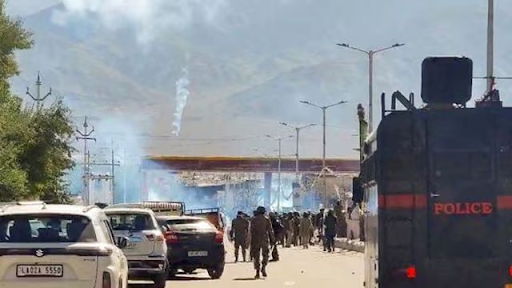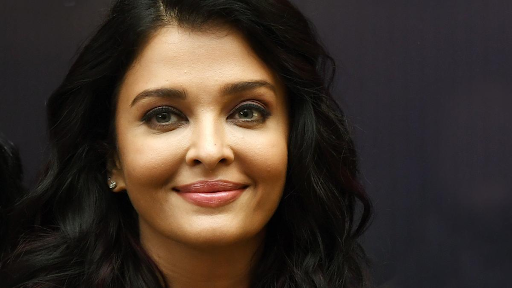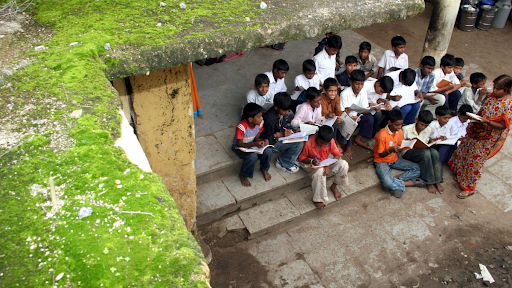Description

Copyright infringement not intended
About:
- The Supreme Court of India celebrated the 73rd anniversary of its establishment.
- ‘Sundaresh Menon’ the Chief Justice of Singapore (Indian origin) was the chief guest of the event.
Background:
- The Supreme Court of India was inaugurated on 28th January 1950; two days after India became a sovereign democratic republic.
- The inauguration ceremony of the Supreme Court took place in the Chamber of Princes in the Parliament building which was the home to the Federal Court of India for 12 years preceding the Supreme Court’s establishment.
- The Parliament House was the sir of the Supreme Court for years until the court acquired its present building in 1958.
- There are 19 Courtrooms in the various wings of the building; Central wing, East wing, and West wing.
- The Chief Justice’s Court is the largest of the Courts located at the Centre of the Central Wing.
.jpeg)
Supreme Court:
- The Constitution of India has established an integrated judicial system with the Supreme Court at the top and the High court below it.
- Under a High court, there is a hierarchy of subordinate courts.
- The court enforces both Central laws as well as state laws.
- This single system of courts was adopted from the Government of India Act of 1935.
- The Supreme Court of India was inaugurated on 28th January 1950.
- It followed the Federal Court of India, established under the Government of India Act of 1935.
- However, the jurisdiction of the Supreme Court is greater than that of its predecessor, because, the Supreme Court has replaced the British Privy Council as the highest court of appeal.
- Articles 124 to 147 in Part V of the Indian Constitution deal with the organization, independence, jurisdiction, powers, and procedures and so on of the Supreme Court.
- The Parliament is also authorized to regulate the court.
- Originally, the strength of the Supreme Court was fixed at eight (one chief justice and seven other judges). The Parliament has increased the number of other judges from time to time.
- At present, the Supreme Court consists of 34 judges (one chief justice and 33 other judges).
- A person shall not be qualified for appointment as a Judge of the Supreme Court unless he/she;
- Is a citizen of India, and
- Has been for at least 5 years a judge of a High Court or two such Courts in succession; or
- Has been for at least 10 years an advocate of a High Court or two or more such Courts in succession or is, in the opinion of the President, a distinguished jurist.
- Every person appointed to be a Judge of the Supreme has to make and subscribe to an oath before the President, or some person appointed by him according to the form set out in the 3rd Schedule of the Constitution. In his oath, a judge of the Supreme Court swears:
- To bear true faith and allegiance to the Constitution of India.
- To uphold the sovereignty and integrity of India.
- To duly and faithfully and to the best of his ability, knowledge and judgment perform the duties of the Office without fear or favour, affection or ill-will.
- To uphold the Constitution and the laws.
- The Constitution does not prescribe a minimum age limit for a judge to occupy his/her office.
- A Judge of the Supreme Court continues to hold the office till he/she attains the age of 65 yrs.
- A Judge of the Supreme Court may tender their resignation to the President even before he/she reaches the age of 65 years.
- Salaries and Allowances
- The salaries, allowances, privileges, leave and pension of the judges of the Supreme Court are determined from time to time by the Parliament.
- They are also paid a sumptuary allowance and provided with free accommodation and other facilities like medical, car, telephone, etc.
- The retired chief justice and judges are entitled to 50% of their last drawn salary as a monthly pension.
- A Judge of the Supreme Court, after retirement, shall not do legal practice in any court in the territory of India and shall not plead before any authority under the Government.
- Judges of the higher judiciary are appointed only through the collegium system and the government has a role only after names have been decided by the collegium.
- Under the Collegium System, appointments/elevation of judges/lawyers to the Supreme Court and transfers of judges of High Courts and Apex Court are decided by a panel of the Chief Justice of India and the four senior-most judges of the Supreme Court.’
- The word ‘Collegium’ is nowhere mentioned in the Indian Constitution, it has come into force as per Judicial Pronouncement.
Evolution of Collegium System:
- Under the Constitution, The Judges of the Supreme Court are appointed by the president. The chief justice is appointed by the president after consultation with such judges of the Supreme Court and high courts as he deems necessary.
- The other judges are appointed by the president after consultation with the chief justice and other judges of the Supreme Court and the high court as he deems necessary.
- Consultation with the chief justice is obligatory in the case of the appointment of a judge other than the Chief justice
- First judges case (1982): The Supreme court held that consultation does not mean agreement and it only means an exchange of views.
- Second judges case (1993): The court changed its earlier ruling and changed the meaning of the word consultation to consensus.
- It ruled that the advice tendered by the CJI is binding on the President in matters of appointment of SC judges. But any such advice would be tendered after CJI consults with two of his most senior judges.
- Third judges case (1998): The consultation process should be based on the plurality of judges.
- CJI should consult a Collegium of four senior-most judges before making a recommendation to the President and even if two judges give an unfavourable opinion, he should not send the proposal to the President.

Independence of Supreme Court: The Constitution has made the following provisions to safeguard and ensure the independent and impartial functioning of the Supreme Court:
- Mode of Appointment: The Supreme Court judges are appointed by the President in consultation with the members of the judiciary itself (ie, judges of the Supreme Court and the high court). This provision curtails the absolute discretion of the executive as well as ensures that the judicial appointments are not based on any political or practical considerations.
- Security of Tenure: The Supreme Court judges are provided with the Security of Tenure. They can be removed from office by the President only in the manner and on the grounds mentioned in the Constitution.
- This means that they do not hold their office at the pleasure of the President, though they are appointed by him.
- No judge of the Supreme Court has been removed (or impeached) so far.
- Fixed Service Conditions: The salaries, allowances, privileges, leave and pension of the judges of the Supreme Court are determined from time to time by the Parliament.
- They cannot be changed to their disadvantage after their appointment except during a financial emergency. Thus, the conditions of service of the judges of the Supreme Court remain the same during their term of Office.
- Expenses Charged on Consolidated Fund: The salaries, allowances and pensions of the judges and the staff as well as all the administrative expenses of the Supreme Court are charged to the Consolidated Fund of India.
- Thus, they are non-votable by the Parliament (though they can be discussed by it).
- Conduct of Judges cannot be Discussed: The Constitution prohibits any discussion in Parliament or a State Legislature with respect to the conduct of the judges of the Supreme Court in the discharge of their duties, except when an impeachment motion is under consideration of the Parliament.
- Ban on Practice after Retirement: The retired judges of the Supreme Court are prohibited from pleading or acting in any Court or before any authority within the territory of India.
- This ensures that they do not favour anyone in the hope of future favour.
- Power to Punish for its Contempt: The Supreme Court can punish any person for its contempt. Thus, its actions and decisions cannot be criticized and opposed by anybody.
- This power is vested in the Supreme Court to maintain its authority, dignity and honour.
- Freedom to Appoint its Staff: The Chief Justice of India can appoint officers and servants of the Supreme Court without any interference from the executive. He can also prescribe their conditions of service.
- Its Jurisdiction cannot be Curtailed: The Parliament is not authorised to curtail the jurisdiction and powers of the Supreme Court.
- The Constitution has guaranteed the Supreme Court, the jurisdiction of various kinds. However, the Parliament can extend the same.
- Separation from Executive: The Constitution directs the State to take steps to separate the Judiciary from the Executive in public services. This means that the executive authorities should not possess judicial powers.
Conclusion:
- The Supreme Court has been assigned a very significant role in the Indian democratic political system. It is a federal court, the highest court of appeal, the guarantor of the fundamental rights of the citizens and the guardian of the Constitution. Therefore, its independence becomes very essential for the effective discharge of the duties assigned to it.
Must Read: https://www.iasgyan.in/daily-current-affairs/njac
Consider the following Statements;
- The Supreme Court of India was inaugurated before the Indian Constitution was adopted.
- Part V of the Indian Constitution deal with the organization, independence, jurisdiction, powers, and procedures of the Supreme Court.
- At present, the Supreme Court consists of 34 judges.
Which of the following statement is/are correct?
(A) 1 and 2 only
(B) 2 and 3 only
(C) 1 and 3 only
(D) 1, 2 and 3
Answer: B
Explanation:
Statement 1 is incorrect: The Supreme Court of India was inaugurated on 28th January 1950.
Indian Constitution was adopted on 26th November 1949.
Statement 2 is correct: Part V of the Indian Constitution deal with the organization, independence, jurisdiction, powers, and procedures and so on of the Supreme Court
Statement 3 is correct: Originally, the strength of the Supreme Court was fixed at eight (one chief justice and seven other judges). The Parliament has increased the number of other judges from time to time.
At present, the Supreme Court consists of 34 judges (one chief justice and 33 other judges)

https://indianexpress.com/article/explained/supreme-court-73rd-anniversary-8424052/











